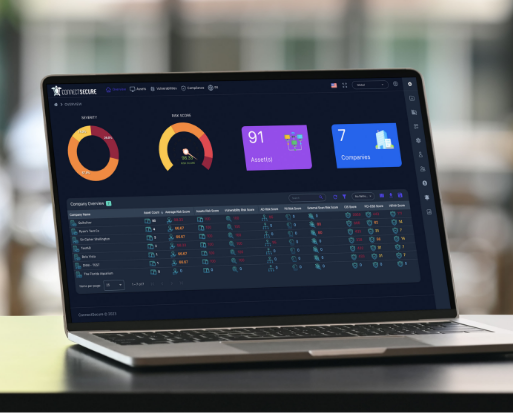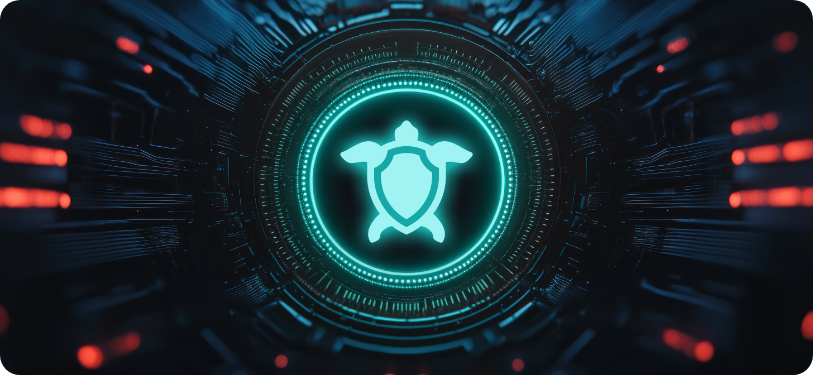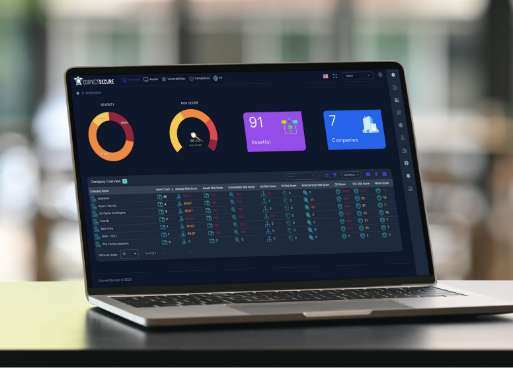Proactive Security Fundamentals
An MSP ResourceProactive Security Fundamentals
An MSP ResourceVulnerability Management for MSPs
- Introduction
- Understanding the Security Paradigm Shift
- Core Elements of Proactive Security
- Zero Trust as a Proactive Security Framework
- Compliance as a Proactive Discipline
- The Business Case for Proactive Security
- Implementing Proactive Security with ConnectSecure
- Conclusion and Next Steps
- Additional Resources
Introduction
Security breaches cost businesses millions annually, with the average data breach in 2024 reaching a record high of $4.88 million, according to an IBM report. For your MSP clients, these incidents can be devastating—disrupting operations, damaging reputations, and potentially closing doors permanently. While many security approaches focus on detecting and responding to attacks after they occur, forward-thinking MSPs recognize this reactive stance leaves clients unnecessarily vulnerable.
Proactive security fundamentally changes this dynamic. Rather than waiting for security incidents to happen, proactive security emphasizes identifying vulnerabilities, implementing protective measures, and continuously monitoring for threats before they cause damage. This approach not only better protects your clients but creates significant opportunities for recurring revenue through ongoing security services.
As security threats grow more sophisticated, the gap between proactive and reactive approaches widens. MSPs implementing proactive security strategies deliver superior protection while building stronger, more profitable businesses with predictable revenue streams.
This resource explores how proactive security transforms both protection capabilities and business models for MSPs. You’ll learn the core elements of proactive security, how frameworks like Zero Trust complement this approach, and practical steps for implementing these strategies with ConnectSecure to drive both security outcomes and business growth.

Experience the Power of ConnectSecure

Understanding the Security Paradigm Shift
Cybersecurity threats have evolved dramatically, but many protection strategies still rely on outdated reactive methods. Proactive security offers MSPs a better approach that simultaneously improves client protection and creates new business opportunities.
The Traditional Security Model: Response and Recovery
Since the early days of networked computing in the 1990s, security primarily focused on building perimeter defenses and responding to breaches after detection. This reactive approach presents several critical limitations:
Detection Lag: The average breach goes undetected for 277 days, according to an IBM security report, giving attackers ample time to extract data, install backdoors, and cause extensive damage.
Escalating Costs: Response and recovery costs grow exponentially with detection time. Emergency response is dramatically more resource-intensive than planned remediation and brings other costs, such as fines, reputation damage, and more.
Business Disruption: Your clients face substantial operational downtime during incident response, often measured in days or weeks for serious breaches.
Reputational Damage: Once breached, businesses face lasting trust issues with customers, partners, and regulators that can persist long after technical recovery.
Limited Learning: Reactive approaches focus on firefighting rather than systematic improvement, creating cycles of similar incidents.
This reactive approach places your MSP in the difficult position of explaining to clients why preventable incidents occurred and justifying recovery costs that exceed what prevention would have required.
The Proactive Security Model: Identify and Protect
Proactive security reverses this dynamic by focusing on prevention and continuous improvement:
Comprehensive Visibility: You can’t protect what you don’t know exists. Proactive security begins with complete discovery and mapping of all client assets, applications, and connections.
Vulnerability Management: Regular scanning identifies and prioritizes vulnerabilities before attackers exploit them, focusing remediation on the most critical issues.
Configuration Control: Misconfigurations represent a leading cause of breaches. Proactive security establishes and maintains secure configurations across all systems.
Continuous Monitoring: Instead of point-in-time assessments, proactive security implements ongoing monitoring that detects changes and emerging threats.
Automated Remediation: Streamlined workflows address vulnerabilities systematically rather than relying on manual intervention.
For your MSP, this shift brings substantial benefits. You move from unpredictable emergency response to planned, efficient security management. Your client conversations change from explaining failures to demonstrating value through prevented incidents. Most importantly, you establish recurring revenue streams through ongoing proactive services rather than unpredictable project work responding to breaches.
The companies thriving in security services have recognized that proactive security creates a healthier business model while delivering superior protection. By identifying and addressing vulnerabilities before exploitation, you position your MSP as a true security partner rather than merely an emergency responder.

Core Elements of Proactive Security
Effective proactive security isn’t a single tool or point solution. It requires a comprehensive approach spanning multiple security domains to identify and mitigate risks before they lead to breaches. These interconnected elements create a robust security foundation for your clients.
Comprehensive Asset Discovery and Inventory
You cannot protect what you don’t know exists. Comprehensive asset discovery forms the foundation of proactive security for several reasons:
Expanding Attack Surfaces: Client environments grow more complex daily with cloud resources, remote endpoints, IoT devices, and shadow IT. Each unmanaged device represents a potential entry point.
Documentation Gaps: Manual inventories frequently miss significant portions of actual assets, creating dangerous security blind spots.
Configuration Baseline: Asset discovery establishes not just what exists but how systems are configured, creating a baseline for detecting drift and misconfigurations.
Resource Allocation: Accurate inventories help you allocate limited security resources to the most business-critical systems.
Proactive asset discovery must be continuous rather than periodic. Point-in-time scans quickly become outdated as your clients add, remove, and modify resources. Only ongoing discovery ensures your security controls protect the actual environment rather than an outdated snapshot.
Vulnerability Management
Vulnerability management extends far beyond periodic scanning to encompass the entire vulnerability lifecycle:
Comprehensive Detection: Effective vulnerability management scans not just operating systems but applications, configurations, cloud services, and network devices.
Intelligent Prioritization: With hundreds or thousands of vulnerabilities identified, risk-based prioritization becomes essential. Modern approaches leverage EPSS (Exploit Prediction Scoring System) to focus on vulnerabilities actively being exploited rather than merely those with theoretical severity.
Remediation Workflows: Discoveries must translate into actions through streamlined remediation processes that integrate with your existing ticketing and management tools.
Verification: The process doesn’t end with remediation—verification confirms fixes actually resolved the vulnerability without introducing new issues.
Recurring Process: Vulnerabilities emerge continuously as new flaws are discovered and new systems are deployed. Vulnerability management must operate as a continuous program rather than a periodic assessment.
Advanced vulnerability management programs include third-party risk assessment, evaluating the security posture of vendors and partners who might create indirect exposure for your clients.

Boost Client Security
Configuration and Baseline Management
Misconfigured systems remain one of the leading causes of security incidents. Configuration management establishes secure baselines and prevents drift:
Secure Standards: Frameworks like CIS Benchmarks and NIST guidelines provide starting points for secure configurations across various systems.
Application Hardening: Beyond operating systems, application hardening removes unnecessary features, services, and default credentials.
Cloud Configuration Management: With over 60% of corporate data now residing in the cloud, according to Statista, proper configuration is critical. An IBM survey found more than 80% of data breaches involve cloud-stored data, often due to misconfigurations such as unchanged default settings, unrestricted access ports, and unsecured backups. Many organizations lack expertise in cloud security configurations, creating significant vulnerability.
Automated Enforcement: Manual configuration quickly drifts. Automated enforcement through group policies, configuration management tools, and compliance checks maintains security posture.
Change Management: Secure configuration requires a controlled process for implementing changes that includes security review and verification.
Effective configuration management dramatically reduces attack surface without requiring additional security tools—simply by ensuring existing systems operate as intended with minimum necessary privileges and services.
Attack Surface Management
External attack surface management takes an attacker’s perspective on your client’s environment:
Perimeter Assessment: Regular scanning of external-facing assets identifies exposed services, open ports, and vulnerable applications visible to potential attackers.
Domain and Certificate Monitoring: Tracking domains, subdomains, and certificates prevents impersonation attacks and identifies shadow IT.
Cloud Security Configuration: As environments extend to multiple cloud providers, cloud security posture management ensures proper configuration across platforms.
Public Exposure Monitoring: Monitoring code repositories, cloud storage, and other resources prevents accidental exposure of sensitive data.
Combined with internal security controls, attack surface management creates a comprehensive view of potential entry points, allowing you to close gaps before attackers discover them.
Continuous Monitoring and Analytics
Proactive security requires ongoing visibility rather than periodic assessment:
Security Monitoring: Continuous analysis of logs, network traffic, and system behavior identifies potential threats before they mature into breaches.
Baseline Deviation: Understanding normal operations helps detect anomalies that might indicate compromise.
Security Analytics: Advanced analytics correlate events across multiple systems to identify sophisticated attacks that might evade single-point detection.
Automated Response: Pre-defined playbooks can respond to common threats automatically, containing potential incidents before they escalate.
These core elements form an integrated system rather than isolated functions. Together, they transform security from reactive incident response to proactive risk management—changing both the security outcomes for your clients and the business model for your MSP.

Zero Trust as a Proactive Security Framework
Zero Trust has gained significant attention as a security approach in recent years. While sometimes portrayed as a separate concept, Zero Trust and proactive security actually complement each other, with Zero Trust principles reinforcing proactive security objectives.
Defining Zero Trust Architecture
Zero Trust represents a fundamental shift from traditional security models based on several key principles:
“Never Trust, Always Verify”: Traditional security assumes internal network traffic is trustworthy. Zero Trust eliminates the concept of trusted networks, devices, or users—requiring verification for every access request regardless of source.
Least Privilege Access: Users receive only the minimum access necessary for their job functions, limiting the potential damage from compromised accounts.
Micro-segmentation: Rather than treating internal networks as trusted zones, Zero Trust divides environments into secure segments, preventing lateral movement when breaches occur.
Continuous Validation: Authentication isn’t a one-time event but a continuous process, with ongoing verification of identity, device health, and behavior.
Zero Trust acknowledges that perimeter defenses alone cannot protect modern environments where resources span multiple clouds, remote locations, and personal devices. The traditional security perimeter has dissolved, requiring a new approach.

Compliance as a Proactive Discipline
Definition of Remediation
Moving from Reactive Compliance to Proactive Governance
The reactive compliance model creates several problems for your clients:
Cost Spikes: Preparing for audits creates resource-intensive compliance sprints that disrupt normal operations and budgets.
Control Gaps: Between assessment cycles, controls often deteriorate without ongoing monitoring, creating security vulnerabilities even while technically “compliant” on paper.
Duplicated Effort: Addressing each framework separately creates redundant work when many requirements overlap across standards.
Missed Business Opportunities: Reactive compliance views security as a cost center rather than recognizing how strong security posture enables business growth and customer trust.
Proactive compliance governance changes this dynamic by embedding compliance into ongoing security operations:
Continuous Control Monitoring: Regular assessment of controls ensures consistent compliance rather than point-in-time readiness.
Common Control Framework: Mapping requirements across multiple regulations identifies overlapping controls, allowing efficient implementation that satisfies multiple standards simultaneously.
Automated Evidence Collection: Systematic documentation gathering throughout the year eliminates pre-audit scrambles.
Risk-Based Approach: Focusing on the intent behind requirements rather than checkbox compliance creates more meaningful security improvements.

See ConnectSecure in Action
Key Compliance Frameworks for MSPs
Several frameworks particularly matter for MSPs and their clients:
Horizontal Frameworks:
- NIST Cybersecurity Framework
- CIS Controls
- ISO 27001/27002
- SOC 2
- HIPAA for healthcare organizations
- PCI DSS for payment processing
- CMMC for defense contractors
- GDPR, CCPA, and other privacy regulations
Building Proactive Compliance Programs
Transforming compliance into a proactive discipline requires several fundamental shifts:
Continuous Assessment: Replace annual compliance checks with ongoing monitoring that identifies control gaps as they emerge.
Evidence Automation: Implement systems that automatically collect and organize compliance evidence during normal operations.
Policy Management: Maintain living documentation that evolves with the business rather than static policies created for audits.
Security-First Mindset: Frame compliance requirements as minimum security baselines rather than maximum requirements, focusing on the intent behind regulations.
Technology Integration: Deploy tools that map security controls to compliance frameworks, providing real-time visibility into compliance posture.
For your MSP, proactive compliance offers significant revenue opportunities through continuous compliance services. Rather than project-based audit preparation, you can offer ongoing compliance monitoring and management as part of your security stack.
This approach delivers better results for clients while creating predictable recurring revenue. Instead of reactive compliance firefighting, you establish your MSP as a strategic compliance partner that helps clients maintain continuous readiness while focusing on their core business.

The Business Case for Proactive Security
Beyond the technical benefits, proactive security fundamentally transforms your MSP business model. Understanding this financial and strategic impact helps you communicate value to clients while building a more profitable and sustainable practice.
ROI Analysis: Proactive vs. Reactive Security Costs
The financial case for proactive security becomes clear when comparing full lifecycle costs:
Breach Cost Avoidance: The average breach costs $4.88 million when considering detection, response, recovery, fines, legal exposure, and reputation damage. Even for small businesses, these costs regularly exceed $100,000 per incident.
Resource Efficiency: Planned security activities require significantly fewer staff hours than emergency response. Your technicians work more efficiently on scheduled tasks than crisis management.
Predictable Budgeting: Both you and your clients benefit from consistent, predictable security spending instead of unpredictable emergency response costs.
Downtime Prevention: Client productivity losses from security incidents often exceed direct recovery costs. Proactive security minimizes or eliminates this business disruption.
Insurance Premium Reductions: Clients implementing comprehensive proactive security programs typically qualify for lower cyber insurance premiums, with some insurers will reduce rates for documented preventive measures.
When presenting proactive security to clients, focus on the combined cost avoidance and productivity benefits. While the monthly investment might appear higher than minimal reactive coverage, the total cost of ownership proves significantly lower when accounting for incident likelihood and business impact.
Creating Recurring Revenue Streams
Proactive security naturally aligns with recurring revenue models:
Tiered Security Packages: Structure offerings in good/better/best tiers that provide clear upgrade paths as client security maturity develops.
Assessment-to-MRR Pipeline: Begin relationships with security assessments that identify gaps, then transition to recurring services addressing those gaps.
Compliance-as-a-Service: Package ongoing compliance monitoring and management as monthly services tied to specific regulatory frameworks.
Bundling Strategies: Integrate security elements with core managed services to increase overall service value rather than positioning them as optional add-ons.
Security Advisory Services: Supplement technical services with virtual CISO offerings for strategic guidance and board/leadership reporting.
By packaging proactive security as recurring services, you create stability for both your MSP and your clients. They receive continuous protection without capital investments, while you build predictable revenue that supports hiring, training, and business growth.
Differentiation in a Competitive MSP Market
As basic IT services become increasingly commoditized, security expertise creates meaningful differentiation:
Expertise Positioning: Security specialization elevates your MSP above break/fix providers and basic managed service offerings.
Client Retention: Security services build deeper trust with clients by protecting their most valuable assets. This trust translates to stronger relationships and improved client loyalty compared to providing infrastructure management alone.
Higher-Value Relationships: Security discussions engage business leaders beyond IT departments, positioning your MSP as a strategic partner rather than a tactical vendor.
Expanded Client Base: Security capabilities open doors to regulated industries and larger organizations with formal security requirements.
The MSP marketplace continues to segment between commodity providers and strategic partners. By embracing proactive security as a core service offering, you position your business in the higher-value strategic segment, attracting clients who prioritize protection over simply finding the lowest-cost provider.
For MSPs seeking growth, proactive security creates a clear path to higher-margin services, deeper client relationships, and sustainable competitive advantage. The transition requires investment in skills and platforms, but delivers returns through improved client outcomes, operational efficiency, and increased business value.

Elevate Your MSP Services

Implementing Proactive Security with ConnectSecure
Translating proactive security principles into practical implementation requires the right platform. ConnectSecure provides MSPs with purpose-built capabilities that integrate seamlessly into your workflows while addressing the full spectrum of proactive security requirements.
ConnectSecure’s Proactive Security Approach
ConnectSecure was designed specifically for MSPs managing multiple client environments:
Multi-tenant Architecture: Manage security across your entire client base from a unified console while maintaining strict data separation between clients.
MSP Workflow Integration: Connect directly with your PSA tools, RMM platforms, and documentation systems, embedding security into existing processes rather than creating parallel workflows.
White-labeled Reporting: Present professional security assessments and ongoing monitoring results under your brand, strengthening your client relationships.
Flexible Deployment Options: Support both cloud and on-premise implementations to accommodate diverse client requirements and regulatory constraints.
Role-based Access Control: Provide appropriate visibility to different team members from technicians to vCISO consultants, ensuring the right information reaches the right stakeholders.
This MSP-centric design addresses the unique challenges of delivering security at scale across diverse client environments without requiring separate tools and workflows for each client.
Key Capabilities for Proactive Security
ConnectSecure provides comprehensive coverage across the proactive security lifecycle:
Asset Discovery and Attack Surface Mapping:- Automated discovery of devices, applications, and network resources
- Shadow IT detection to identify unauthorized cloud services
- Service and application fingerprinting for precision vulnerability targeting
- Internal and external scanning perspectives
- Continuous scanning against 230,000+ known vulnerabilities
- EPSS prioritization focusing on actively exploited vulnerabilities
- Remediation workflow automation integrated with your ticketing system
- Application patching for over 550 third-party applications
- Verification to confirm successful remediation
- Application baseline scanning against secure standards
- Active Directory security assessment
- Microsoft 365 and Google Workspace configuration analysis
- Firewall configuration evaluation
- Web application security assessment
- Support for 16+ frameworks including NIST, CIS, HIPAA, PCI DSS
- Automated control mapping across multiple frameworks
- Compliance gap remediation workflows
- Evidence collection and documentation
- White-labeled compliance reporting
- PII scanning to identify exposed personal information
- Data classification and risk assessment
- Compliance mapping for data protection requirements
- Remediation guidance for data protection issues
Implementation Approach
ConnectSecure supports a phased implementation that aligns with client security maturity:
Phase 1: Assessment and Visibility Begin with comprehensive scanning and assessment to identify current security posture and establish priorities based on risk levels.
Phase 2: Critical Vulnerability Remediation Address the most severe and exploitable vulnerabilities first, focusing on externally exposed systems and highly privileged accounts.
Phase 3: Ongoing Monitoring and Management Implement continuous scanning, monitoring, and remediation workflows to maintain security posture as environments evolve.
Phase 4: Advanced Security Capabilities Expand to additional security domains including cloud security, compliance automation, and data protection as clients mature.
This progressive approach allows you to deliver immediate security improvements while building toward comprehensive coverage, aligning security investments with risk reduction at each stage.
Measuring Security Improvement
ConnectSecure provides clear metrics to demonstrate security progress:
Vulnerability Reduction: Track overall vulnerability counts and severity trends over time.
Mean Time to Remediation: Measure how quickly critical issues are addressed after discovery.
Compliance Scores: Monitor percentage of satisfied controls across relevant frameworks.
Risk Score Trends: Visualize changing risk levels as security improvements take effect.
These quantifiable metrics transform security from an abstract concept into measurable business outcomes, helping you demonstrate concrete value to clients while justifying their ongoing security investments.
By implementing proactive security with ConnectSecure, you establish a systematic approach that addresses the full spectrum of security requirements while integrating seamlessly with your MSP operations—delivering better protection for clients and stronger business results for your practice.

Conclusion and Next Steps
Proactive security transforms how MSPs approach client protection. By focusing on prevention rather than reaction, you deliver superior security outcomes while building a stronger, more profitable business. This approach aligns security investments with business objectives, creating value for both your clients and your MSP.
The core elements of proactive security—comprehensive discovery, vulnerability management, configuration control, and continuous monitoring—work together to identify and address security gaps before attackers can exploit them. When implemented effectively, this approach significantly reduces security incidents while streamlining operations and creating predictable costs.
For MSPs looking to implement proactive security, ConnectSecure provides a purpose-built platform that addresses the full security lifecycle while integrating with your existing workflows. The multi-tenant architecture, comprehensive scanning capabilities, and automated remediation workflows enable efficient security management across diverse client environments.

Ready to Drive Business With Vulnerability Management?
Getting Started
To begin your proactive security journey:
- Assess your current security offerings against the proactive security framework outlined in this guide.
- Identify capability gaps where your current tools and processes don’t fully address proactive security requirements.
- Evaluate how ConnectSecure can fill those gaps through its integrated vulnerability and compliance management platform.
- Start with a free trial to see firsthand how ConnectSecure enhances your security capabilities while integrating with your MSP workflows.
- Develop service packages that combine ConnectSecure capabilities with your security expertise to create compelling client offerings.
Proactive security represents both better protection and smarter business strategy. By implementing this approach with ConnectSecure, you position your MSP for growth while helping clients navigate an increasingly complex threat landscape. The result is stronger security, higher margins, and deeper client relationships built on demonstrated value.